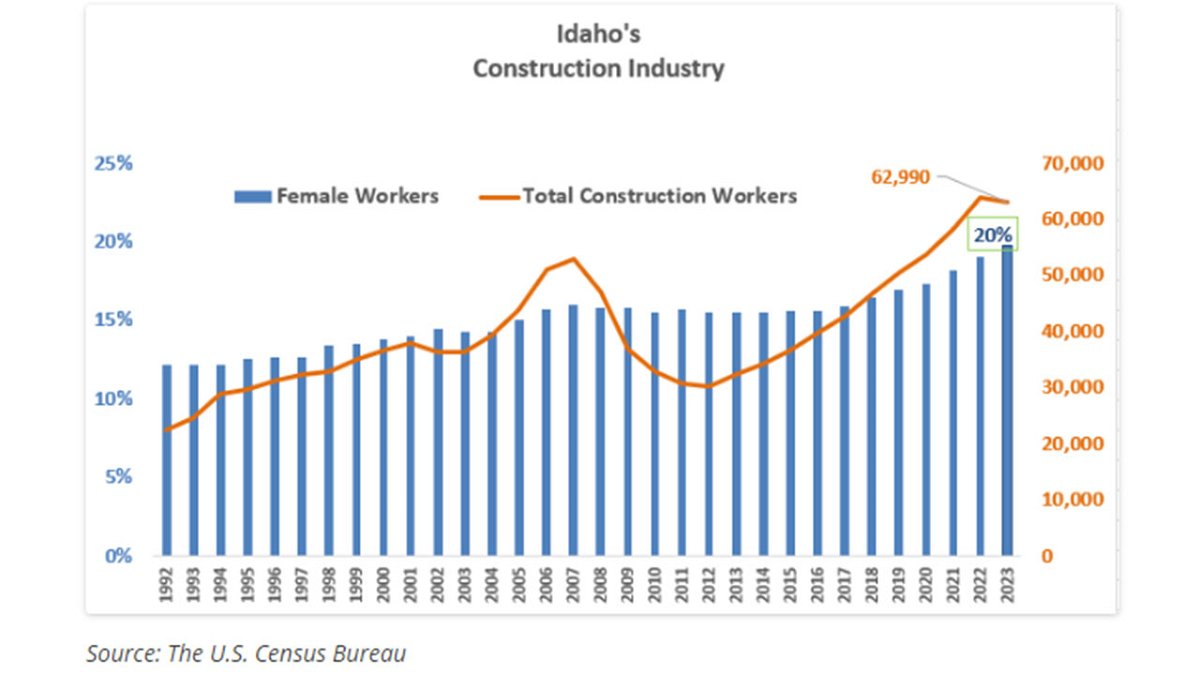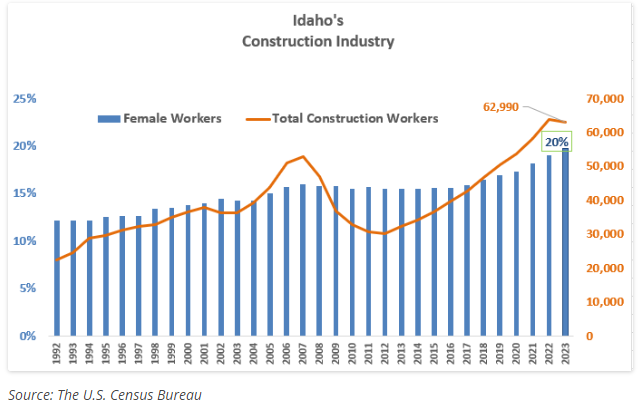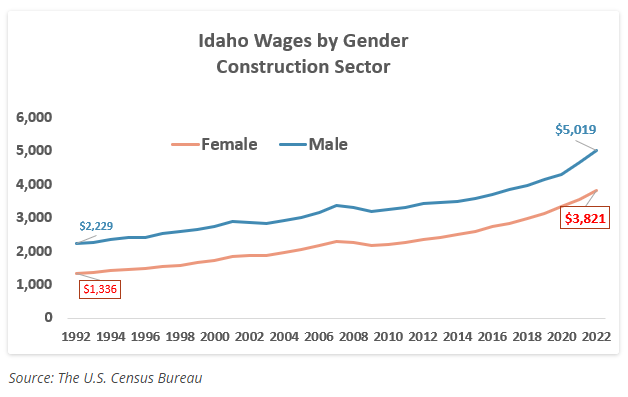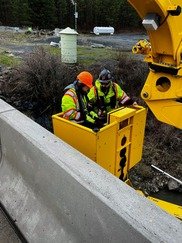Women working in trades and transportation are on the rise

IDAHO FALLS, Idaho (KIFI) - More and more Idaho women are achieving financial stability by holding nontraditional roles in male-dominated industries - whether it be in construction, transportation or the general trades.
“Working in transportation helped me find things I love to do,” Idaho Department of Transportation Training Specialist Lori Copeland said. "There is value in discovering how the perspective I bring to my work as a woman is different than most of my male counterparts."
Construction
According to the U.S. Census Bureau Quarterly Workforce Indicator (Q2 2023), one in five women are construction workers in Idaho (approximately 20%). The number of women in the industry overall has grown by 8% since 1992.

While the share of women in the transportation industry is growing, there is still a wage gap by gender in Idaho when it comes to the construction industry. On average, men earn an estimated $60,228 per year and women earn 31.4% less or $45,852 on average according to the U.S. Census Bureau.

“Men traditionally make more in almost every industry,” said Jan Roeser, Labor economist for southwestern Idaho. “Looking at construction and transportation, you usually see a 25-30% wage gap. However, turnover is lower for women in construction, and we continue to see wage growth and more women working in this industry.”
Some women in the construction industry find value and say it is a high paying career. Morgan Galway, Apprenticeship Coordinator for Labor, said this was the case for her.
Before her current role in a government agency, Galway used to work in granite fabrication. She was the only woman on a team of 50 workers. She said she saw value in the male-dominated industries she was surrounded by her entire life and decided to enter the field. It didn’t matter to her whether a man or a woman did the job.
“You can’t grow if you don’t step outside of your comfort zone,” Galway said. “Stepping into construction gave me the confidence to move into other industries and positions knowing that I brought a different and valuable perspective to the table.”
The advice she gives to other women going into a trade is to improve your skills and knowledge. This gives you a chance to advance your career pathway.
Transportation
Transportation is another industry that isn’t always top of mind. Many women hold roles at the Idaho Department of Transportation (ITD), and some women are able to enter the field through the agency's ICONIC program (Idaho Career Opportunities – Next in Construction).
ICONIC is a training program that allows Idaho residents to receive the kind of training that leads to becoming heavy equipment operators, concrete masons, carpenters, truck drivers and mechanics.
Administrator Jessika Doglietto shared the story of a woman who used to live out of her car in Alaska who participated in the ICONIC program. After completing the program, she is now a heavy equipment operator making over $100,000 annually, and she's not living in her car anymore.
“I’ve had women reach out after the training and express their gratitude because they are single mothers of two children who used to work two jobs. They could barely make ends meet. Now, they make enough money to not work two jobs. They’re saving money and their lives are significantly better,” Doglietto said.

Of the 105 ICONIC graduates over the past few years, 80% have found careers in the highway construction trades within 45 days of completion.
Trades
While employment seems to be low in the heating, ventilation and air conditioning (HVAC) industry — about 3,000 people in the state — women are still entering the field.
Charity Nicholson, a first-year HVAC apprentice at Western Heating and Air Cooling, is attending the College of Western Idaho to gain industry credentials. She said having four children and juggling work can be a challenge, but she is able to work with her employer to attend classes.
“I never thought I would be in this industry," Nicholson said. "I started out with no skills, but between on-the-job training and schooling — I am heading there. I am learning about electricity, heating and air, and I recommend any female to get into the trades."
Many apprenticeship opportunities go beyond the HVAC industry and include welding, plumbing, sheet metaling and other jobs.
Apprenticeship opportunities
An apprenticeship is on-the-job training with job-related classroom instruction weaved into the work duties with an opportunity to complete a nationally recognized certificate or credential.
State officials say it’s okay for someone to enter an apprenticeship program without any industry knowledge because it is the place to “earn while you learn.”
"Employers are looking for soft skills when they fill positions," Roeser said. "Examples include skills like critical thinking, a solid work ethic, being on time, caring about the job and so much more."
Idahoans interested in construction, transportation or even the general trades can find a Registered Apprenticeship opportunity online at apprenticeship.gov. There are more than 100 opportunities across the state and employers are ready to help aspiring job seekers launch their career.
Employers interested in sponsoring an apprenticeship program can find more information on Labor's website.
